What is Ameluz Photodynamic Therapy?
Ameluz is a cutting-edge topical prescription medication used in photodynamic therapy to treat actinic keratosis, a common precancerous skin condition caused by sun damage. This innovative therapy involves the application of Ameluz cream to the affected skin areas, followed by exposure to a specialized light source. The combination of Ameluz and light activation provides targeted treatment for actinic keratosis, supporting effective and precise skin rejuvenation.
Photodynamic Therapy
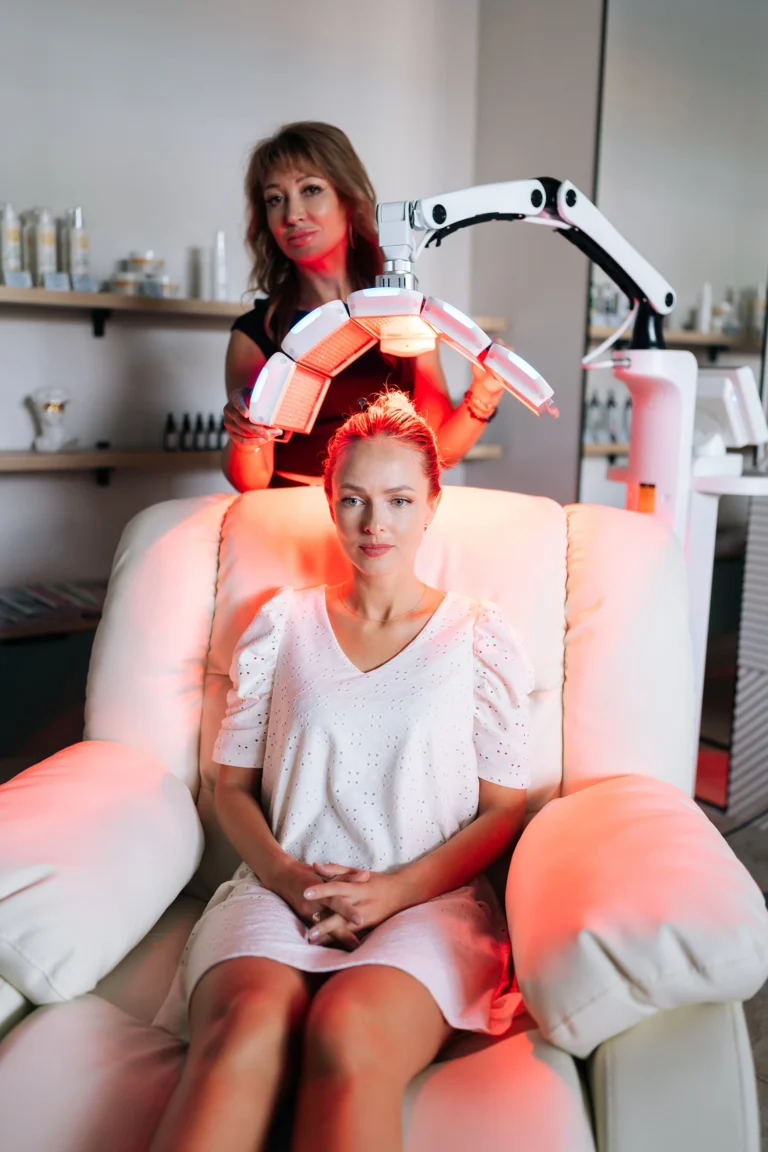
Preparation:
- Please let us know:
- If you have a history of cold sores (Herpes simplex virus),
- We will prescribe you a medication to help reduce the possibility of an outbreak following treatment.
- Valtrex 500 mg 1 capsule 2 x per day 5 days before, 5 days after
- If you are pregnant or have contraindications such as Lupus, photodermatoses, porphyria, known allergies, or known hypersensitivity to Ameluz (includes soybean phosphatidylcholine), porphyrins, or PDT in the past.
- If you are on blood thinners (Asprin, NSAIDS, Warfarin, Coumadin)
- Please inform us if you are taking any of the following medications, as they may intensify your reaction and increase side effects:
- St. John’s Wort , Griseofulvin,
- Thiazide diuretics.
- Sulfonamides (such as sulfamethoxazole/trimethoprim compounds like Bactrim or Septra).
- Phenothiazines (anti-psychotic medications ending in “azine”).
- Tetracyclines (including doxycycline, tetracycline, and minocycline).
- Quinolones (including alidixic acid, ciprofloxacin, levofloxacin and moxifloxacin)
- If you have a history of cold sores (Herpes simplex virus),
- Please arrive with clean skin, ensuring the area is washed beforehand. Make sure the treatment area is free of makeup, moisturizers, sunscreens, perfumes, and lotions.
- We recommend that you wear comfortable clothes to your appointments, or you can change into a gown if your chest is being treated. . If you tend to get chilled from air conditioning, bring a sweater or light jacket to wear while you are waiting for the cream to take effect. Bring a good book, iPad or Kindle is also recommended.
- Pre-Treatment photos will be taken prior to application of the Amulez cream
- Please ensure you bring the following items to your appointment and have them available at home for aftercare:
- For face and scalp treatments: Bring a wide-brimmed hat and sunglasses to cover the treated area (we can provide a hat if needed!).
- For neck, chest, or back treatments: Bring a scarf and clothing that can cover the treated area.
- For arm or leg treatments: Bring clothing that can fully cover the treated area (yes, even in the summer!).
- For hand treatments: Bring gloves and sleeves to cover your hands and wrists, especially for driving home!
- Additionally, have the following items ready:
- A gentle cleanser like CeraVe, Cetaphil, or Vanicream, free of active ingredients and fragrances.
- A high-SPF sunblock (at least SPF 50) containing zinc oxide and/or titanium dioxide (Blue Lizard and Elta MD is our favorite!)
- A thick moisturizing cream such as CeraVe or Vanicream , without active ingredients or fragrances.
- Men, if treating the face, please trim your facial hair short (or hair over the area to be treated). You do not need to shave all the way but if you choose to, you can do this at least one-two days prior (not the morning of to avoid irritation).
- Stop using any topical tretinoin (Retin-A), Differin, Epiduo, and Tazorac three weeks before your PDT treatment. You can resume these medications once your skin is fully healed from treatment
What to expect:
- Plan to spend approximately 1.5-2 hours inside our office (30-60 minutes for the AMELUZ gel to incubate and 10 minutes per area of active treatment – about 20 minutes treatment total). You can bring things to do during this time.
- Alcohol will be applied to your skin which removes surface fats from your skin and thus allows the Ameluz medication to penetrate more efficiently. Your healthcare provider will select the amount of incubation time your Ameluz will remain on your skin; this is typically between 30- 120 minutes, depending on the condition(s) and area(s) to be treated.
- During the treatment, you will sit in an exam chair, and we will place a protective covering over your eyes before shining the light on the pre-treated area.
- Following this incubation period, the patient will sit under a red-light for approximately 20 minutes (10 minutes right side of face, 10 minutes left side of face) If treating scalp it’s a 10 minute red light session . Insurance only pays for one area per session. Either face, scalp, arms or chest per session.
- You might experience itching, tingling, burning, or a warm feeling on your skin. We have a fan running to help alleviate any discomfort that may arise. The more damaged the skin, the more potential for discomfort. We will be there with you every step of the way to ensure the most comfortable experience possible.
- After your treatment is complete, we will apply a thick layer of sunscreen on the area, you will put on your protective clothing, and go right home.
- Redness, dryness, tenderness, peeling, inflammation, and mild discomfort can occur especially in the first week after treatment. If at any point you experience any severe pain or develop a fever, please let us know immediately!
Aftercare:
- During the first 48 hours after treatment, it is imperative that you avoid sunlight as much as possible.
- If your scalp or face was treated, you should try your best to stay indoors for the first 48 hours, apply sunscreen regardless of being indoors or outdoors (preferably with Zinc oxide – Blue Lizard is our favorite), and stay away from being directly next to windows and bright lamps indoors.
- If other areas were treated (like the arms or legs) it is important you keep these covered with clothing if outdoors (even in the summer!) and apply the same sunscreen underneath, but you do not have to stay indoors.
DAY 1/Same day of treatment:
-
- Go straight home with your protective clothing and sunscreen on.
- Your skin can start to turn mildly pink to red and feel “hot” like a sunburn during this time.
- You can start applying ice packs a few times daily for the first 24 hours afterwards. This can help with any swelling that may occur.
- If the face was treated, you can start to see swelling most noticeably around the eyes and/or lips.
- You should not wash your face for the first 24 hours. Afterwards you can use gentle, unscented cleanser like Cerave or Cetaphil the next day.
- You can apply your thick moisturizing cream (unscented and gentle Cerave/Cetaphil frequently to keep your skin hydrated. (Pro Tip! You can put the moisturizer in the fridge to aid in cooling!)
- Elevate your head while sleeping to help with any swelling.
- You may take Tylenol as needed. NO NSAIDS! No Advil or ibuprofen, Aleve or naproxen, aspirin etc…
Day 2:
- Continue avoiding sunlight, wear sunscreen, and remain indoors as much as possible hours 24-48. If you must go outside you need to wear your hat, sunglasses, clothing etc…
- After the first 24 hours, your skin may begin to peel. There can be some crusting and oozing, this is normal. Some patients might have little to no redness or peeling, while others can have significant redness and peeling that can last 5-10 days. Keep your skin moisturized and DO NOT pick at the peeling to minimize risk of infection. The peeling areas will come off as your skin heals underneath. During this time you should not wear makeup, shave or rub your skin.
- You can keep applying ice packs and use Tylenol as needed.
- You can shower and continue to use your gentle cleanser and moisturizer.
- Keep avoiding sunlight and apply your sunscreen!
Days 3 on:
- Avoid direct sun exposure as your skin is healing especially over the next 2 weeks, and practice diligent sun protection EVERY DAY with at least SPF 30 (still a sunscreen that has zinc oxide, we love Blue Lizard).
- Your discomfort should be minimized by day 3.
- You can continue to peel for 7-10 days. Your skin can feel tight and/or dry so continue to moisturize!
- Once your peeling and any crusting resolves, you can go back to shaving the area and wearing makeup. You can also go back to using your tretinoin.
- Even after peeling your skin can remain pink while it is fully healing but should look more even and clear. Again, a reminder to continue wearing sunscreen every day.
- Once you are fully healed, we recommend you still have a daily skincare regimen that includes daily sunscreen wear, even under makeup, to prevent new skin damage.
CALL US IF YOU:
- Develop a fever of 100.4 °F (38 °C) or higher, with or without chills.
- Experience symptoms that become intolerable or persist for more than two weeks.
- Notice mild flu-like symptoms that worsen or do not resolve.
- Suffer from increasing pain or pain that does not subside.
- Observe blisters, open sores, scaling, or crusting in the treated area.
- Have any questions or encounter any unexpected issues Call 845-485-5000 or
- Email Dermatologist@artofSkin1.com

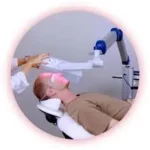
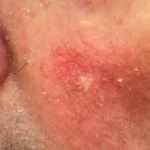
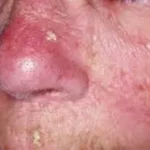
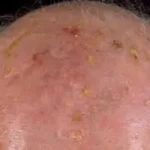
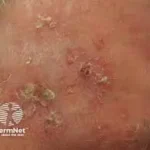
Similar Services
Melasma
Melasma, also known as chloasma, is a condition that causes uneven skin coloration. It occurs when there is an excess of skin pigmentation due to the overproduction of melanin by melanocytes, the cells responsible for producing melanin.rnrnThere are several factors that can contribute to the development of melasma, including exposure to ultraviolet light, genetic predisposition, and hormonal imbalances. Interestingly, the blue light emitted from LED screens, such as those found on cell phones, televisions, and laptops, can also play a role in the formation of melasma.rnrnMelasma tends to appear on areas of the skin that are frequently exposed to the sun, such as the forehead, nose, cheeks, upper lip, chin, neck, arms, and back.
Chemical Peels
A chemical peel involves the application of a customized chemical solution to the skin to prompt a gradual peel of the treatment area. Once the treated skin has peeled away, new, smoother skin is revealed to restore a more youthful complexion.rnrnChemical peels are most often performed on the face. Skin on the backs of the hands, the chest, and the neck can also be rejuvenated with chemical peels.rnrnWe use an assortment of peels to address several chronic skin conditions. Melasma, hyperpigmentation, acne scars, sun damage, and fine lines and wrinkles can all be improved with chemical peel treatments.
Let’s connect.
Have questions? Want to schedule an appointment? Simply complete the form and we’ll get back to you within 24 hours.
